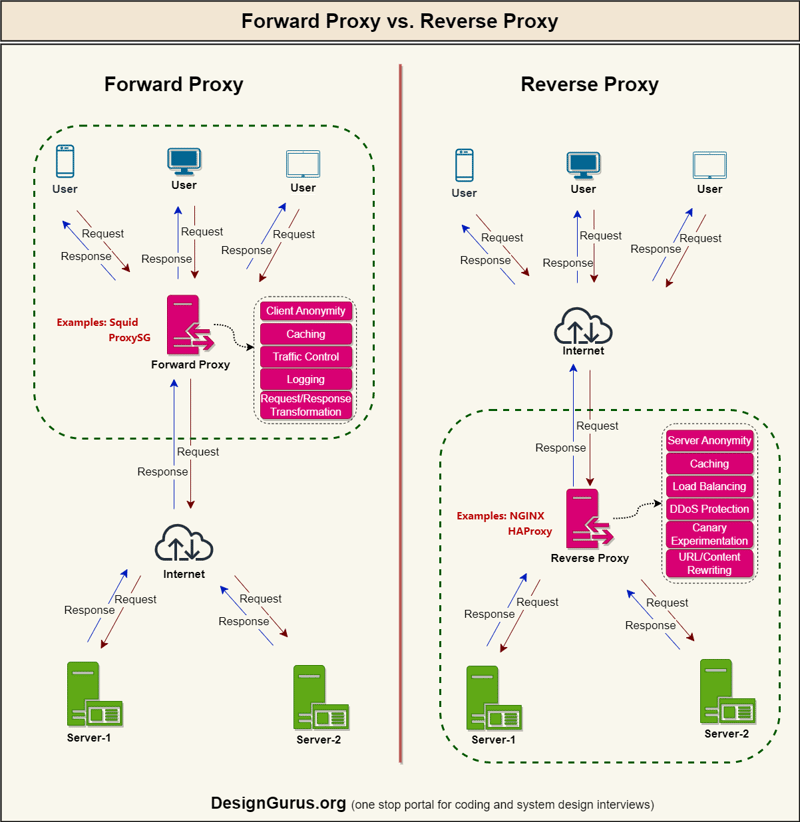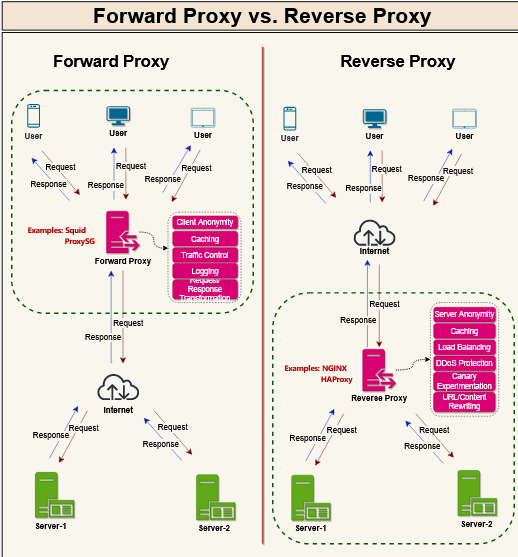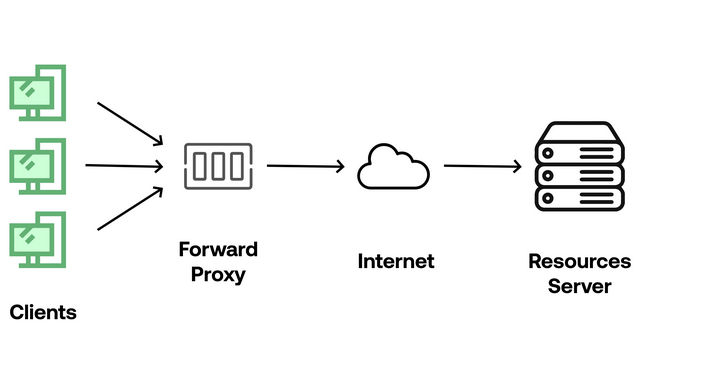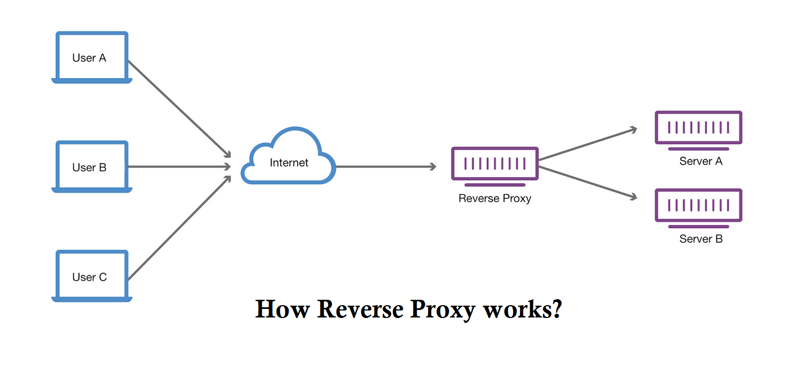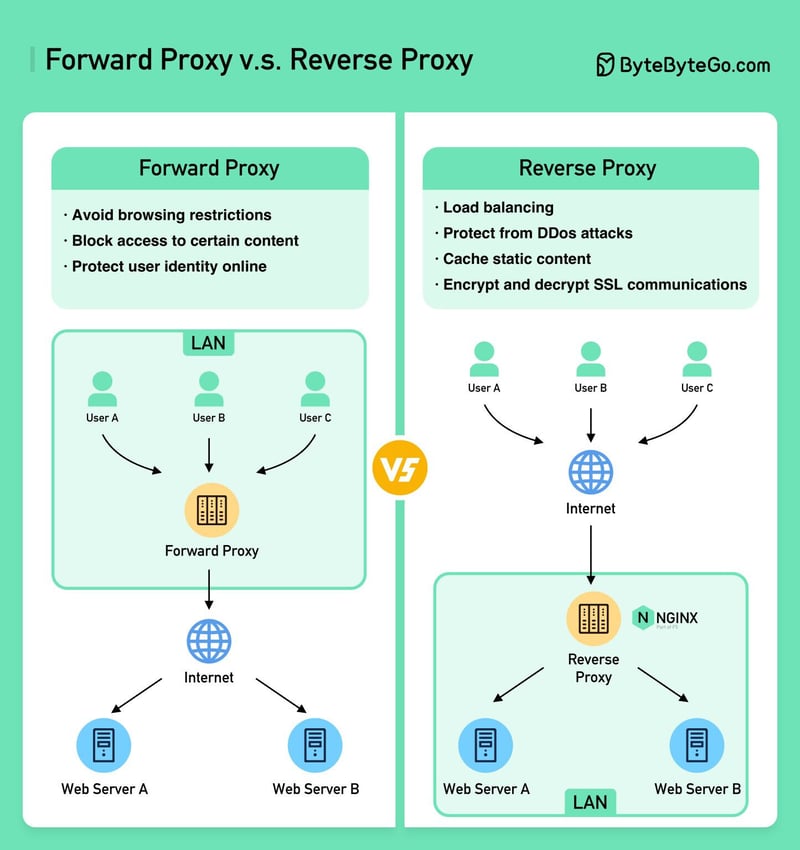An Interest In:
Web News this Week
- April 27, 2024
- April 26, 2024
- April 25, 2024
- April 24, 2024
- April 23, 2024
- April 22, 2024
- April 21, 2024
Difference between Forward Proxy and Reverse Proxy in System design
Disclosure: This post includes affiliate links; I may receive compensation if you purchase products or services from the different links provided in this article.
image_credit - DesignGuru
Hello folks, in last few article, I was answering popular System design questions like API Gateway vs Load Balancer and Horizontal vs Vertical Scaling, and today, we are going to take a look at another interesting System design question, Reverse Proxy vs Forward Proxy.
These questions are different than system design problems like how to design WhatsApp and YouTube but they are equally important and if you have knowledge of them you can mention in most of the system design problems.
Now coming back to the topic, In network architecture world, proxies play a pivotal role in managing and securing communication between clients and servers.
There are two common types of proxies, forward and reverse proxies, they serve distinct purposes and operate at different layers of the networking stack. Forward proxies are used to shield clients from external networks while Reverse proxy acts as a frontend Facade for backend Servers, much like API Gatewawy and load balancers.
Let's go deep into the intricacies of forward and reverse proxies to know their differences and understand their respective roles in system design.
By the way, if you are in hurry then below diagram from DesignGuru.io, one of the best resource for system design interviews and creator of Grokking the System Design Interview nicely explain it:
What is Forward Proxy?
A forward proxy, also known as an outbound proxy, acts as an intermediary between clients and external servers, intercepting outbound requests from clients and forwarding them to their intended destinations.
Here is what forward proxies do for you:
Client-Side Proxying
Forward proxies are typically deployed on the client side of a network, serving as a gateway for outbound traffic. Clients configure their network settings to route traffic through the forward proxy, which then forwards requests to external servers on behalf of the clients.Anonymity and Privacy
Forward proxies can enhance user privacy and anonymity by masking the IP addresses of clients. External servers only see the IP address of the forward proxy, making it difficult to trace the origin of requests back to individual clients.Content Filtering and Caching
Forward proxies can implement content filtering policies to restrict access to certain websites or content categories based on predefined rules. Additionally, they can cache frequently accessed content, reducing bandwidth usage and improving performance for subsequent requests.Security and Access Control
Forward proxies can also enforce security policies and access controls, allowing organizations to regulate access to external resources, block malicious websites, and inspect outbound traffic for threats or policy violations.
You can see in below diagram that forward proxy route user request to back end servers
Now that we know what is forward proxy, let's take a look at reverse proxy and what services it provides:
What is Reverse Proxy?
A reverse proxy, also known as an inbound proxy, operates on the server side of a network, serving as a front-end facade for backend servers.
It intercepts incoming requests from clients and forwards them to the appropriate back-end servers based on predefined rules.
Key aspects of reverse proxies include:
Server-Side Proxying
Reverse proxies are deployed on the server side of a network, typically in front of backend web servers or application servers. They accept incoming requests from clients on behalf of backend servers and forward them internally.Load Balancing and Traffic Distribution
Reverse proxies can distribute incoming traffic across multiple backend servers to improve scalability, reliability, and performance. They use algorithms such as round-robin, least connections, or weighted distribution to evenly distribute requests.SSL Termination and Encryption
Reverse proxies can handle SSL/TLS termination, offloading the encryption and decryption process from backend servers. This simplifies management of SSL certificates and improves performance by reducing the computational overhead on backend servers.Content Delivery and Optimization
Reverse proxies can cache static content, compress data, and optimize delivery to clients, reducing latency and bandwidth usage. They can also perform content rewriting or transformation to adapt content for different client devices or browsers.
Here is also a nice diagram which shows how reverse proxy work which is quite useful for system design interview, and if you are preparing for one, Educative.io's Modern System design guide is another awesome resource I recommend.
Difference between Forward and Reverse Proxies and Use Cases
While both forward and reverse proxies act as intermediaries in network communication, their primary objectives and deployment scenarios differ:
For example, Forward proxy is primarily used to shield clients from external networks, enhance privacy and security, and enforce access controls and its ideal for individual users, organizations, or networks requiring outbound traffic management and anonymity.
On the other hand, Reverse Proxy is primarily used to front-end backend servers, improve scalability and performance, and provide centralized management of incoming traffic.
It is ideal for web servers, application servers, or microservices architectures requiring load balancing, SSL termination, and content optimization.
And, here is a nice diagram which highlight the difference between Forward Proxy and Reverse Proxy from ByteByteGo, one of the best place to learn System Design for interviews. If you are preparing for system design interview, you should definitely check it out, they also have an awesome YouTube channel.
Conclusion
In conclusion, both forward and reverse proxies are indispensable components in modern network architectures, each serving unique purposes and offering distinct capabilities.
While forward proxies focus on client-side traffic management and security, reverse proxies excel at server-side load balancing, scalability, and optimization.
Understanding their differences is essential for designing resilient, efficient, and secure systems that meet the diverse needs of modern applications and services.
And, if you are preparing for System design interview then you may also like my previous articles
Thank you !!
Original Link: https://dev.to/somadevtoo/difference-between-forward-proxy-and-reverse-proxy-in-system-design-54g5
Dev To
 An online community for sharing and discovering great ideas, having debates, and making friends
An online community for sharing and discovering great ideas, having debates, and making friendsMore About this Source Visit Dev To


